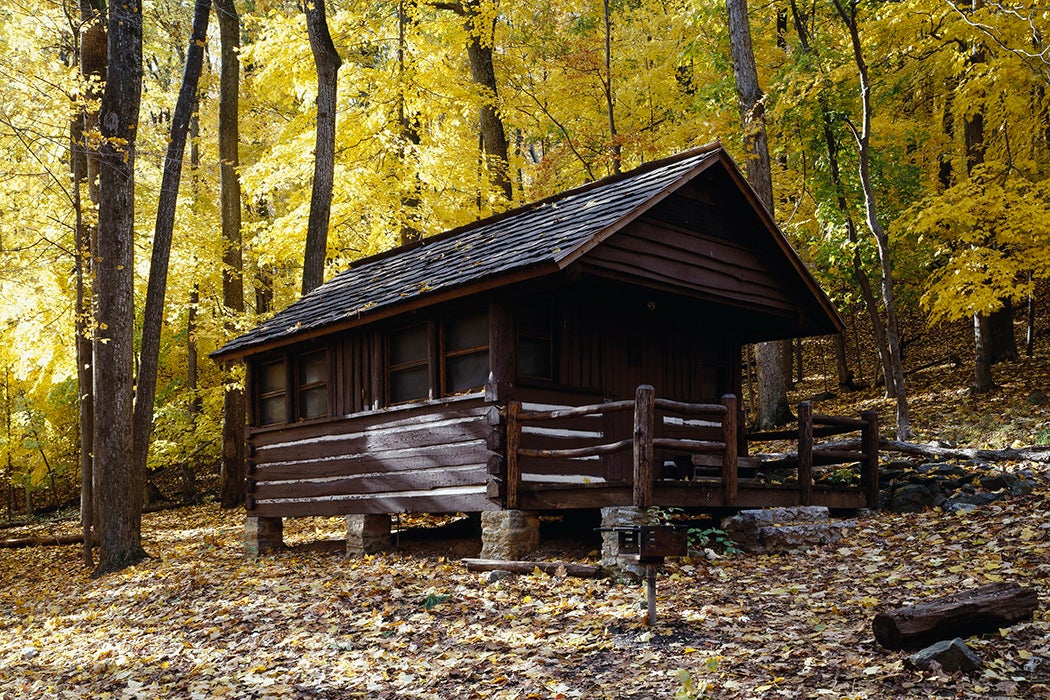For hikers on the Appalachian Trail, arriving at a shelter at the end of the day means a source of fresh water and a dry place to sleep—assuming the hut isn’t already full by the time they arrive. Particularly for through-hikers, the shelter also represents a gathering place for members of the trail community to socialize and exchange information. As architect and building science scholar D. Jason Miller writes, these shelters are the product of a number of construction techniques used in different places on different parts of the long trail. But they all fit into an architectural archetype known as the “primitive hut.”
Miller writes that the origins of the trail go back to 1921, when regional planner Benton MacKey wrote an article describing a vision for connecting Appalachian communities. He suggested that this would promote locally organized economic development, in contrast to the imposition of industrialization on the region. The construction of the trail took place gradually, through the work of local hiking clubs and, later, the New Deal-era Civilian Conservation Corps (CCC). Part of this work was the construction of the backcountry shelters.
Miller writes that the idea of the primitive hut goes back to the eighteenth century. French theologian Marc-Antoine Laugier described huts supposedly built by “primitive man,” as a representation of the underlying nature of architecture: structures created to provide for fundamental human needs while remaining in harmony with the natural world.
“The primitive hut explains the fundamental purpose of architecture as shelter and the fundamental meaning of architecture as art in the imitation of nature,” Miller writes.
CCC workers built many of the Appalachian Trail’s earliest shelters. They had no specific guidelines, though the huts were supposed to have a “rustic” look. Typically, the workers constructed them from straight, healthy trees, which they felled, de-barked, and dried before dragging them to the building site. Some of the early shelters were built from the American chestnut before the species was devastated by blight. In other cases, CCC workers instead built shelters from stone found in the local area, held together with mortar made from sand, water, and cement.
Weekly Newsletter
Later, the US Forest Service and local hiking and conservation groups built structures using mass-produced materials including concrete blocks and timber products. But they generally had a stylistic similarity to the earlier versions.
Today there are about 250 shelters, maintained by the Appalachian Trail Conservancy and more than thirty hiking clubs. The typical design is a three-sided structure with an open front, built on a shallow foundation with a sloping roof overhanging the open side. A raised platform provides sleeping space for six to twelve people. The surrounding area generally features a water source, an outhouse, a fire ring, a table, and some tent sites. Registers—often just a notebook and pen—allow visitors to note observations, including suggestions about trail maintenance needs.
In the spirit of Laugier’s huts, Miller writes, “they are houses without owners, familiar though primitive signs of domesticity.”







